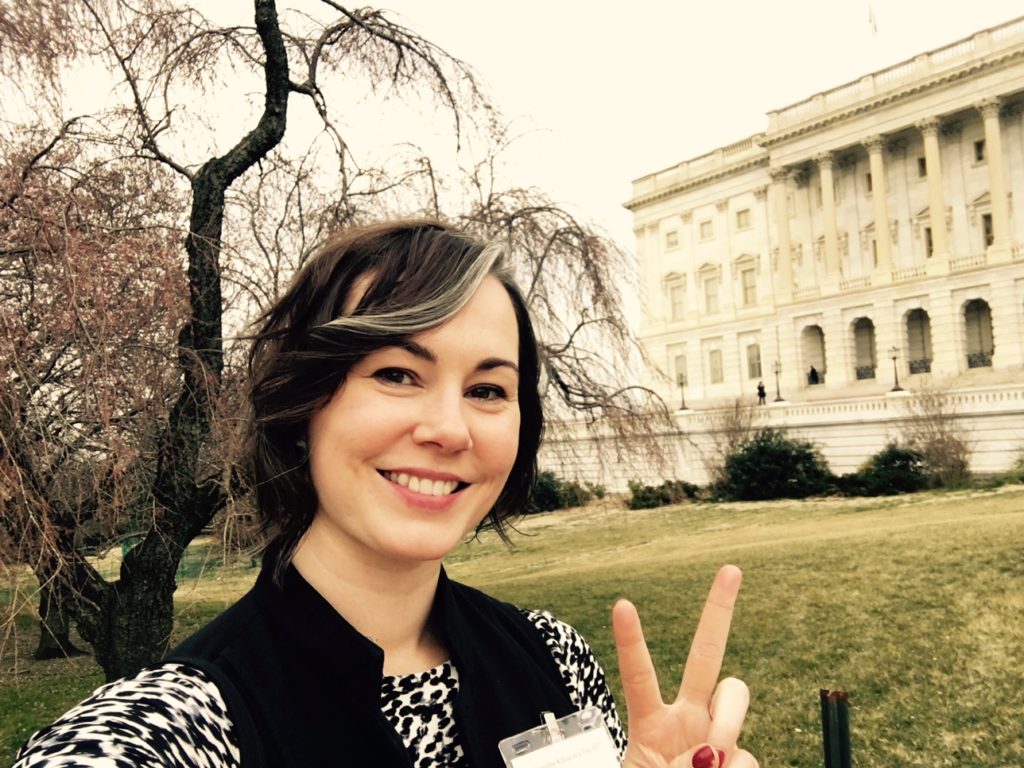By Charity M. Counts, executive director of the Association of Midwest Museums
*******
This week, I represented museums in the state of Indiana at the single largest gathering of museum professionals on Capital Hill – Museums Advocacy Day, organized by the American Alliance of Museums. I attended numerous sessions and talks led by experienced advocates during what I would refer to as “Advocacy Boot Camp” to prepare me (and 375 colleagues) for meetings with State Senators and members of Congress.
Before I share the most important things I learned, I want to give a little background on our organization’s role in advocacy. It has been our role since the beginning to engage professionals in our region and support them in every way that we can. We have been representing museums in the Midwest at Museums Advocacy Day since it started, around 8-9 years ago.
As shared in a previous post by our volunteer, Jessica Fischer, here is an example from 1943:
AMM’s original statement of purpose was to “promote cooperation between its members and museums and museum workers in general”, but AMM also provided assistance beyond that. In 1943, the Department of Conservation’s Ann Arbor Planning Committee began a WPA project called the Southeastern Michigan Recreation Project which aimed to provide better recreational facilities for the community, including expanding museums. AMM Secretary-Treasurer Helen LeFavour contributed to the cause on behalf of AMM by writing to Michigan legislators in support of the bill. And it passed, providing Southeastern Michigan residents access to better cultural and recreational resources.
Ms. LeFavour wrote letters to advocate for museums and, after hearing success stories this week, I know those letters mattered. Participating this week opened my eyes to numerous ways we can participate in our democracy and support our legislators. Here is what I learned about Museums Advocacy Day and advocacy in general:
- It’s not scary. AAM makes sure that you are primed and ready for meetings on The Hill. When I woke up on day 1, I was nervous. On day 2, I felt bold (still a little nervous). After my first meeting, I realized I had these meetings locked! It was actually FUN to talk about museums (big surprise) and see the smiles on the faces of staff and representatives when they talk about museums they love.
- The men and women who serve our state as representatives to the Senate and Congress may not be aware of the work you/we are doing. Like your visitors, your representatives need some prompting to learn and understand. It is possible they won’t come to the table with an awareness of issues that affect you. They need to be notified of your exhibit openings, passionate work in your communities, school programs and economic impact. They need some understanding of how you operate, raise money and support education and innovation. You are among a long list of businesses they represent, and it is your duty to make yourself known. Make an effort to arm them with factual information for the discussions they are a part of and decisions that they make, from budgeting to tax reform.
- In-person meetings. letters and emails are the most effective way to communicate with representatives. Take the time to do it. Keep them informed. It will be noted. And furthermore, lack of communication may very well be your greatest adversary in effectively advocating for your organization or cause.
- Congressional staff are important people regardless of age. Staff are often the individuals who will spend most of the time getting to know you, as part of their portfolio of focus areas. Treat them kindly, respect their role and take time to learn about them. They will ultimately decide what information is fed to their superiors, how and in what order. (For the record, I felt the staff that I met with were bright and well-informed, even if the information I was delivering wasn’t something they were versed in completely. They were ready to be versed in it, of course – knowledge is power!)
Even as I attended numerous individual meetings alone, I was proud to be among so many passionate, intelligent supporters of the work that museums do. They ranged from students to trustees, association heads to business owners. I hope to see more of you there next year!

